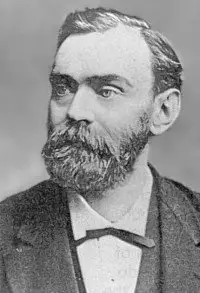 An important application of chemical energy is the use of explosives. Any substance that undergoes a very rapid chemical reaction which has a strong heat-liberating quality, or that produces a large volume of gases from a solid or a liquid, is potentially an explosive.
An important application of chemical energy is the use of explosives. Any substance that undergoes a very rapid chemical reaction which has a strong heat-liberating quality, or that produces a large volume of gases from a solid or a liquid, is potentially an explosive.
The destructive power of an explosion is due to the shock wave caused either by (1) the rapid increase in volume from the gases formed or (2) to the rapid expansion of the atmosphere as a consequence of the large amount of heat released in a short time, or (3) to both of these circumstances. The slower combustion that occurs in low explosives such as gun powder produces shock waves that travel at about 100 metres per second. If an explosive reaction is very rapid, the shock wave may travel at very high speeds, up to 6,000 metres per second, and the explosive is classified as a high explosive. TNT and nitroglycerin are examples.
The oxygen required for the very rapid combustion of high explosives cannot come from the air because the oxidation is too rapid. For these high explosives, the oxygen comes from the explosive itself. Often such explosives are mixed with other oxygen-containing substances in order to increase the amount of oxygen available. Many common explosives contain nitrogen compounds as well, which give off significant amounts of heat during combustion.
The oldest known explosive is gun powder, which was used in ancient times in China, Arabia, and India, possibly as early as the tenth century. The products from this reaction include a large volume of gases such as carbon dioxide, carbon monoxide and nitrogen, as well as a dense smoke of fine particles.
For many purposes gun powder has been replaced by stronger explosives such as ammonium nitrate. When ammonium nitrate is detonated, it decomposes in a very heat liberating reaction to give a large volume of gaseous products. One of these products is oxygen which can also be used to react chemically with other substances, thus further increasing the energy released.
Ammonium nitrate is also used as a fertilizer. Normally, its use as a fertilizer is safe, because ammonium nitrate must be detonated before it will explode. However, the careless handling of large quantities of ammonium nitrate fertilizer can cause a massive explosion. For example, in 1947 a ship carrying ammonium nitrate fertilizer exploded and leveled a huge area of Texas City, Texas, claiming 576 lives.
Nitroglycerin is a liquid that explodes 25 times faster than gun powder and with three times the energy per gram. Although it was used as an explosive soon after it was first prepared in 1866, nitroglycerin is much too unstable and sensitive to shock to be handled safely. For transportation the containers were packed into a type of clay called ‘kieselguhr’ in order to cushion them from shocks as much as possible. Alfred Nobel, a Swedish inventor, noticed that when nitroglycerin leaked from the containers, it was soaked up by the clay. The nitroglycerin-soaked clay is much more stable and less sensitive to shock than pure nitroglycerin. Nobel called this safer explosive dynamite, and he made enough money from manufacturing it to found the Nobel prizes in peace, literature, physics, chemistry, and physiology and medicine. These prizes were first distributed in 1901.
